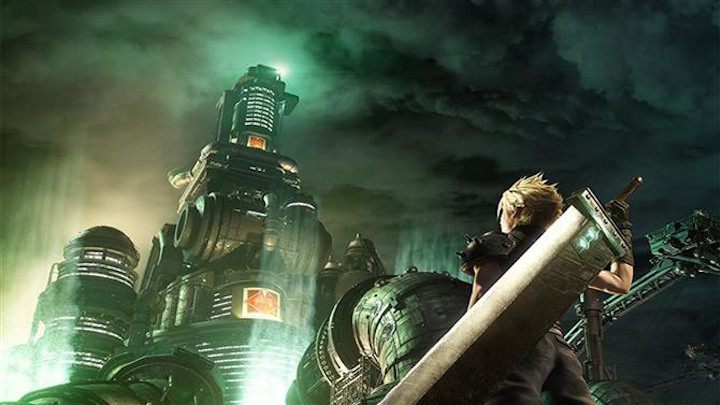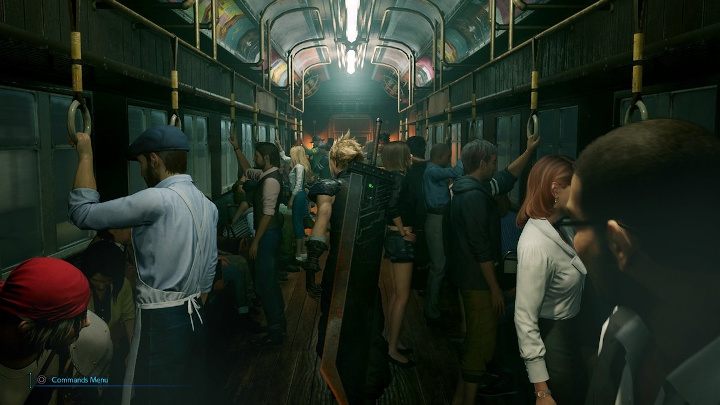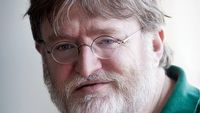Final Fantasy VII Remake Takes 100 GB Due to Unique Assets
In an interview with USgamer, Naoki Hamaguchi, co-director of Final Fantasy VII remake, revealed why the game takes up as much as 100 GB. Apparently, the individual locations were built from unique assets.
- Square Enix's Naoki Hamaguchi revealed that the remake of Final Fantasy VII takes up as much as 100 GB due to the unique assets used to create the individual locations.
- The Japanese company wants the city to live and have a soul, because they want players to have mixed feelings about the consequences of blowing up Reactor 1 at the beginning of the game.
In mid-February we wrote about the leaked back cover of the Korean version box of Final Fantasy VII Remake, which informed us that the title will require as much as 100 GB of free disk space. Many people were wondering what is taking so much space, especially as it is only the first episode of the refreshed edition of the iconic 1997 jRPG. There was talk of uncompressed video files, for example. It turns out, however, that this is not the case. In an interview with USgamer, Naoki Hamaguchi, co-director of the production, revealed that such massive data volume consists of unique assets.

To quote Hamaguchi:
"Rather than thinking about repurposing standard assets for individual locations, like the Slums or the Shinra Building, we decided to build each location using unique assets to achieve the quality desired for [Final Fantasy VII Remake - editorial note]."
All this is to breathe life into Midgar, which would not be limited by the capabilities of the hardware, as it was the case with the original. Let's give the floor to Hamaguchi again:
"As such, we designed assets like the backgrounds, [background music - e.n.] and characters per location, which allowed for a unique gameplay experience in each area, even from a game design perspective."

There is no denying that Square Enix has put a lot of effort into creating the new design of Midgar. Hamaguchi already talked about this in an interview on the PlayStation blog in early March. But why does the Japanese team want the city to be "alive" so much? It's all about triggering the right reaction in the audience after blowing up Reactor 1 at the beginning of the game. Again, to quote the developer:
“The player gets to see how the [Reactor bombing] impacts the city. We want them to feel conflicted about the effects of their actions. That’s why we depicted this area in such detail.”
Did the creators manage to achieve the desired effect? Anyone with a PlayStation 4 console will be able to find out as early as April 10, when the first episode of Final Fantasy VII Remake will make its market debut (though not without some complications caused by the coronavirus; see here for more details). If you're thinking about buying, we'd like to remind that there's a demo of the title available in PS Store, covering the initial part of the story.
0

Author: Milosz Szubert
A film expert by education. Has been working at Gamepressure.com since January 2017. A fan of tennis, basketball, comics, good books, history, and strategic games by Paradox. Recently a self-taught Game Master (apparently he's quite good at it). For several years, he edited films on the Notatnik Kinomana channel on YouTube.
Latest News
- End of remote work and 60 hours a week. Demo of Naughty Dog's new game was born amid a crunch atmosphere
- She's the new Lara Croft, but she still lives in fear. Trauma after Perfect Dark changed the actress' approach to the industry
- „A lot has become lost in translation.” Swen Vincke suggests that the scandal surrounding Divinity is a big misunderstanding
- Stuck in development limbo for years, ARK 2 is now planned for 2028
- Few people know about it, but it's an RPG mixing Dark Souls and NieR that has received excellent reviews on Steam, and its first DLC will be released soon


